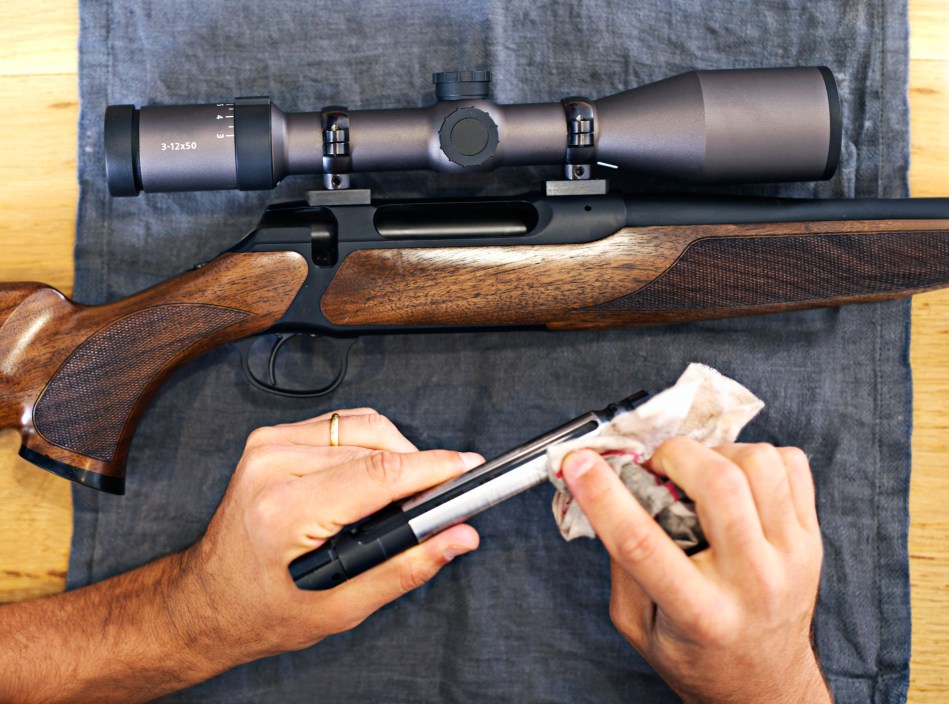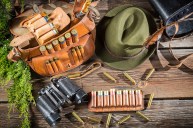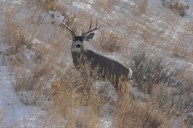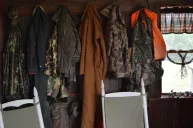Hunting gear maintenance is simple: If you take care of your hunting gear, it'll take care of you. That's why, at the end of each season, I take a day or two to work on postseason maintenance. Putting your gear away for the year in good condition will make it last longer, and it will be ready to go next year when you need it most—say, when a big buck walks into your sights.
If you're like me, by the time hunting season ends, your gear is all over the place. Throughout the season, gloves, calls and other gadgets have been shoved in a half-dozen pockets; everything's gotten dirty; and my knives are no longer sharp. Our hunting gear is made to be used, so it's no big deal—but only if I follow my postseason maintenance routine.
Taking good care of your gear ensures it'll last a long time. You'll also stay more organized for next season, and when the big shot of 2024 needs to be taken, all your gear—and you—will be ready. Here's how I handle my hunting gear maintenance and care at the end of the season, in six easy steps.
1. Wash and Store Your Clothes
The end of hunting season is a good time to get all your gear together and take inventory. When I do this with my hunting clothes I like to lay them out on the floor in groups. I usually go for six different groups: top base layers and light shirts, top middle layers, top outer layers, bottom base and mid layers, bottom outer layers, and finally a group for socks, gloves, facemasks, and headwear.
Separating your clothing makes it easy to look and see what you have, and identify any gaps in your gear. Maybe you remember a hunt from this year where you wished you had a better rain jacket, or you got a little cold and you realized you may need better base layers. Whatever it may be, now is the time to figure out what you should buy before the next season starts.
After you get all of that figured out, I suggest you wash everything. Even if it was already clean, wash the lot of it. I don't re-wash all the gear I am going to wear for each hunt; if I had to transition from warm weather hunting clothes to colder weather, I may have forgotten to wash that warm weather gear because I didn't need it. Since I'm about to put the clothes away, they all need to be clean. Remember to use scent-free cleaners.
After you get everything washed, you need to store it. During the season I use an airtight tub to transport my clothes and other scent-free gear in my truck, and I have found that the same tub works great for storing clothes after the season is over.
2. Organize Your Pack and Small Gear
If your clothes were a mess, I know for a fact that your hunting pack has all sorts of things shoved in it. At season's end, I dump the hunting backpack, sort all the gear I keep in it, and throw away all the leftover snack wrappers. Once all the gear is out of the bag, I wash it. Most hunting packs are machine washable, but if yours is too big, you can try washing it by hand and hanging it outside to dry.
Do the same thing to your gear you keep in the bag: If you can clean it up, you should. For things like paracord or straps, make sure they are properly coiled up and not wadded up in a ball. Make everything as neat and clean as you can, and then re-pack your hunting backpack and you will be ready to go next season without having to think about where you put your headlamp last November.
3. Sharpen and Clean Knives
Knives should and do get used and abused during the season. The more successful you are as a hunter, the duller your knife is going to get. This year, I shot five deer, and ended up processing six, so you can bet that I needed to sharpen a knife or two during the season. That way, next year, when I need my skinning knife, it's ready to go—and clean.
4. Clean & Safely Store Your Weapon
This step depends on how much you used your weapon and what kind of weapon you were using. If you are a bow hunter, you will want to use some bow string wax and maybe wipe your bow down, but that is about all you need to do before you put it in the case; next season, before you hunt with it, you'll tune your bow.
If you use a rifle, but you only shot a handful of times this year, you realistically don't have to fully clean your firearm. Still, it's a good idea even if you've just carried your gun around all year to properly clean it. If you're wondering how to clean your rifle or shotgun, here's a full guide.
5. Clean Your Processing Equipment
The hunting gear that takes me longest to clean is my processing equipment. If you use a cuber or a grinder, you know just how many hours you can put into cleaning just to have it still look dirty. That gear will never look new again after you use it—but it's very important to put some effort into cleaning it, particularly after you've processed your last deer of the season.
Now is the time to clean any other gear you use to process wild game, like knives, packaging equipment, and hangers. If it can be cleaned, make sure you clean it well—this is how you enjoy eating your game without getting sick, after all. Take stock of gear like vacuum-sealed bags to make sure you'll have enough for next year's bounty.
6. ATV Maintenance
Hunting ATVs (and UTVs) are quite the investment, and they can make a huge difference. If you hunt up north where the deer are especially big, having an ATV to drag them out of the woods and to the truck is crucial. Plenty of hunters have to travel a long way to their hunting spots, and full-size trucks don't usually fit on those trails. All and all, an ATV is an important piece of equipment that you should put some effort into both before and after the season. Luckily I recently wrote an entire guide to hunting ATV maintenance that you can read here.
If you don't have time to read that guide, here are the basic things you should do to your ATV after the season wraps up:
- A general once over looking for basic damage.
- Tire inspection, looking for wear or small leaks which you can find if you notice one tire is lower pressure than the others.
- Gas treatment before letting the ATV sit for a while.
Once you've got your ATV taken care of, you can pile up a woodfire extra high, grab a glass of your favorite drink, and toast to a season well completed. You'll be ready when the next one rolls around.




